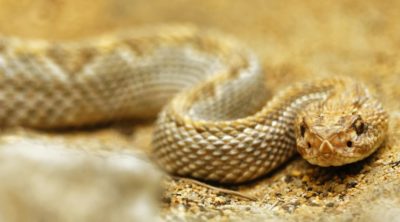
Contemplating the idea of going for an exotic pet? Here’s a short write-up on different types of pet snakes that you might be interested in. The information on choosing and handling pet snakes that has been provided here will be of great help for you – if intend to own one.
Even though many people believe that the abnormal fear of snakes is referred to as ‘herpetophobia’, the fact is that this term actually refers to abnormal fear of reptiles and/or amphibians, and not just snakes alone. The fear of snakes in particular – on the other hand, is referred to as ‘ophidiophobia’ or ‘ophiophobia’. Keeping the details of this term aside, the very fact that you are reading this implies that you are not suffering from this phobia. Or maybe you are, but you are even more curious to know how anyone can keep these snakes as pets. Whatsoever the reason is, we understand that you are keen on knowing about pet snakes, and information on pet snake species is what we will provide here on.
How to Choose a Pet Snake?
Not all snakes are ideal pets, and of the few which are – not all may suit your lifestyle, and hence you need to give the idea of keeping a snake as a pet a serious thought before you get one. There are some things which need to be taken into consideration, one of the most important one being the size as some snakes attain a length of 10 ft as they reach adulthood. The simple rule of the thumb is that smaller the snake, easier it is for you to care for it. The second thing to take into consideration is lifespan. Several snakes have a lifespan of 20 years and more, and you should opt for such snake only if you are ready to commit to 20 years of pet care.
Yet another aspect that needs to be taken into consideration is their diet. Some snakes prefer to eat live food, while some snakes won’t mind going for dead-frozen food. The temperament of the species also plays a crucial role, and hence should not be ignored – especially if you have kids in your home. Opting for a snake caught in wild is not at all a wise option considering that they have a bad temperament, and – more importantly, the chances of parasitic infections in wild snakes exist in plenty. Similarly, you will also have to give the option of keeping a snake as a pet a serious thought if you have other pets in your house. Most important of all, you should always buy a pet snake from a reputed breeder after ensuring that no signs of illness are to be seen.
Most Popular Pet Snakes
If you have taken all these things into consideration and you still want to go ahead with it, you are just one step ahead from the same – contact the veterinarian in your neighborhood, not just for advice but to make sure that the medical facility will be at your disposal as and when needed. Now that you are well-versed with the basic knowledge about keeping snakes as pets, the next thing to do will be to choose the right snake of the available lot. If you are not sure as to what you are looking for in your pet snake, you can go for one of the various types of snakes with pictures enlisted below.
Garter Snake

Scientific Name: genus Thamnophis
Average Lifespan: Up to 15 years
Average Length: 2.5-3.5 ft
Dietary Requirements: A combination of worms and mice will work fine.
As a Pet Snake: The calm temperament and simple diet makes the garter snake an ideal option as a pet snake, especially for beginners.
Milk Snake

Scientific Name: Lampropeltis triangulum
Average Lifespan: 10-12 years
Average Length: 2-5 ft
Dietary Requirements: Small pre-killed mice for young ones, decent sized mice for adults.
As a Pet Snake: Being docile and easy to tame, milk snakes are ideal for beginners. However, the fact that they tend to practice cannibalism makes it mandatory to house them separately.
Carpet Python

Scientific Name: Morelia spilota
Average Lifespan: 20-30 years
Average Length: 4-10 ft depending on species
Dietary Requirements: Appropriately sized-rats and chicks.
As a Pet Snake: Though they are nippy as babies, they grow on to become docile adults and hence one wouldn’t encounter much problems with carpet pythons as pets.
Ball Python

Scientific Name: Python regius
Average Lifespan: 20-30 years
Average Length: 3-4 ft
Dietary Requirements: Live, pre-killed or frozen-thawed rodents.
As a Pet Snake: The comparatively small size of this python species and their docile nature makes them ideal pets.
Green Tree Python

Scientific Name: Morelia viridis
Average Lifespan: 20-25 years
Average Length: 4-6.5 ft
Dietary Requirements: An ideal diet consists of mice, rats and chicks fed once or twice a week depending on the size.
As a Pet Snake: Even though it has marvelous appearance, it is considered to be a highly advanced species in terms of basic care, and hence you should only go for it if you are willing to devote enough time.
California Kingsnake

Scientific Name: Lampropeltis getula californiae
Average Lifespan: 20-25 years
Average Length: 3-4 ft
Dietary Requirements: Appropriately sized pre-killed rodents.
As a Pet Snake: The ease of care, attractive appearance and docile nature of this kingsnake species makes it an ideal exotic pet.
Gopher Snake

Scientific Name: Pituophis catenifer
Average Lifespan: 12-20 years
Average Length: On an average 6 ft (May range between 3-9 ft depending on species).
Dietary Requirements: Pre-killed feeder mice and rats.
As a Pet Snake: The range of colors that the gopher snake species come in, along with their docile nature, makes this species an ideal bet for beginners.
Corn Snake

Scientific Name: Pantherophis guttatus
Average Lifespan: 15-20 years in captivity
Average Length: 4-6 ft
Dietary Requirements: Eats frozen food
As a Pet Snake: This rat snake species is considered to be an ideal pet snake owing to its docile nature, attractive color and simple requirements in terms of care.
Burmese Python

Scientific Name: Python molurus bivittatus
Average Lifespan: 20-25 years
Average Length: 12-15 ft
Dietary Requirements: Pre-killed feeder mice and rats. Appropriately-sized rats for young snakes, poultry/rabbits for adults.
As a Pet Snake: Though considerably large, the attractive color and easygoing nature of this python species makes them wonderful pets.
Brazilian Rainbow Boa

Scientific Name: Epicrates cenchria cenchria
Average Lifespan: Up to 20 years in captivity
Average Length: 5-7 ft
Dietary Requirements: A pre-killed rat every two weeks will suffice.
As a Pet Snake: As a baby, this rainbow boa species tend to be a bit nippy, but it won’t take time to get acclimatized to the surrounding. Not a good choice for beginners, but an ideal pet if you are ready to put in a bit of efforts.
So those were ten different types of snakes which you can ideally keep as pets. Even though these snake species make ideal pets, nobody can deny the fact that snakes are not the right pets for everybody. If not handled properly, even the most docile species can attack you in self-defense. Similarly, there are significant chances of you misunderstanding your pet snakes behavior, especially if you are not well-versed with them. Considering the amount of care that they need, you should only opt for snakes as pets if you are willing to put in the required efforts and make sure that you meet their needs.
PS: As fascinating as they may seem, you should avoid keeping large constrictors and venomous snakes as pets because of the potential danger that they pose for humans. Now that’s a practice which even the experts would strongly recommend against.

